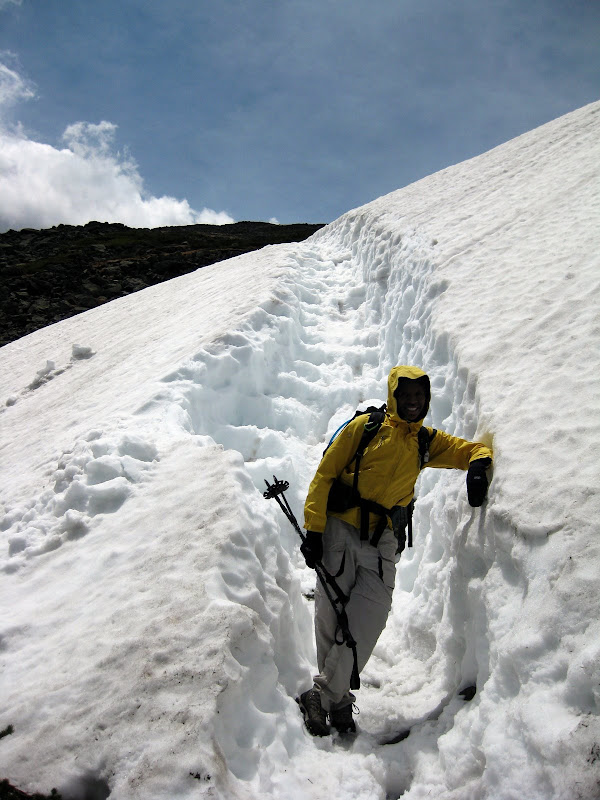Adams and Jefferson require good weather due to the mileage above treeline. Lowe's is a nice trip up Adams, I'd probably pick Lowe's. (If you need the protection of the trees on Valley Way, then you probably shouldn't be doing both peaks.) Could do both and then go back to Edmands Col and then pick up the Randolph. The Randolph does spend some time above treeline and scrub exiting Edmands. It felt longer the two times I've used it to exit Edmands col. IMO, the Jewell is a better foot way than Randolph IMO and doing Lowe's and Jewell would be a really nice trip, it does require the car spot though.
In the other three seasons, I prefer going up Falling Waters and down Greenleaf & OBP. In winter, I prefer going up OBP and down Falling Waters.
On a good day it doesn't really matter. On an iffy day, by going up OBP, you reach the hut where you can assess your options and know where you are (4200 ft.) The other way, you are just below Lil Haystack when you get a view of the ridge or fog. If it changes while you are on the ridge, it's easier, IMO, finding where the Falling Waters trail heads into the trees while you have to meander off of Lafayette to find where the trail enters the scrub above Greenleaf Hut.

